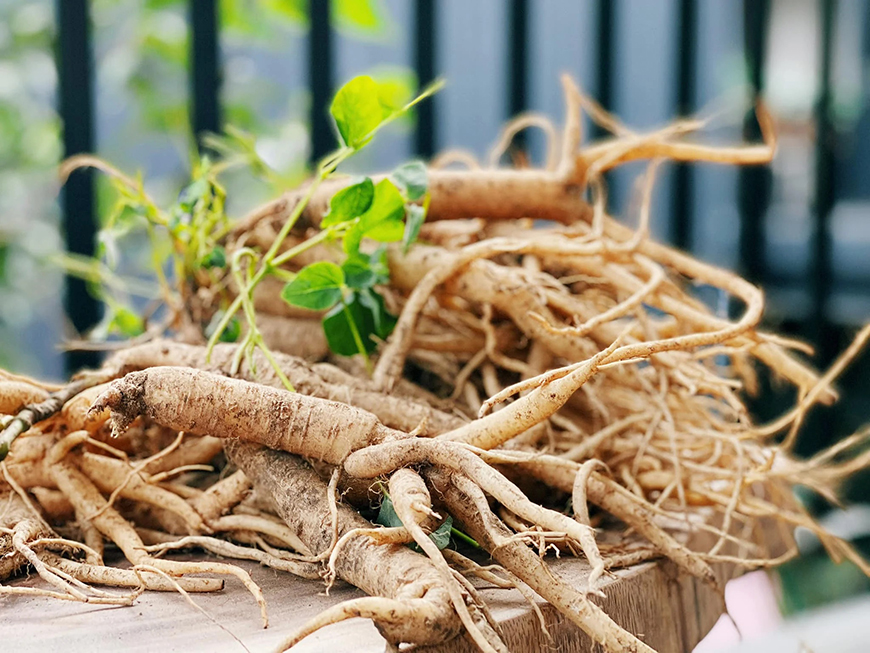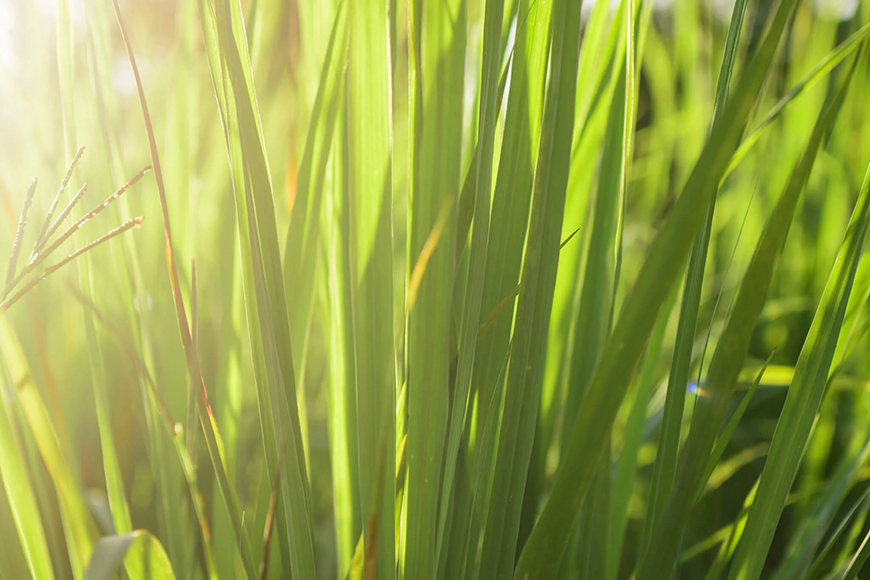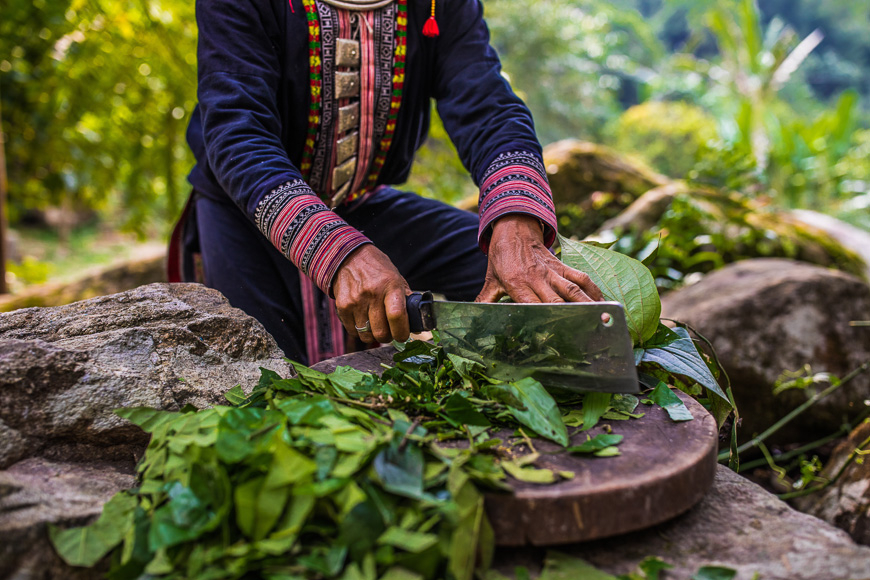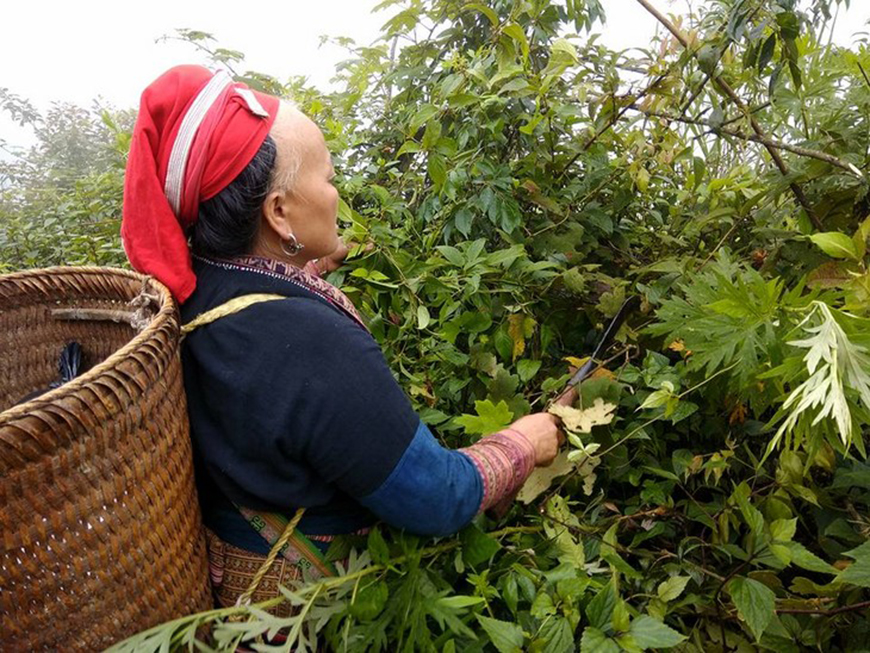The Ba Be National Park, in the heart of Vietnam, is a true paradise for nature lovers. Its lush forests harbor exceptional biodiversity, and among its most precious treasures, there are numerous plants with medicinal properties.
Ancestral heritage
For centuries, local communities, especially the Tay and Dao ethnic groups, have been using these plants to treat everyday ailments. Their knowledge, passed down from generation to generation, has given rise to a rich and varied traditional pharmacopoeia.
Forest celebrities
Among the most iconic plants of Ba Be, we find:

Ngoc Linh, the Vietnamese ginseng - Source : Internet
Vietnamese ginseng: Considered an elixir of youth, Sâm Ngọc Linh is used to strengthen the body and improve cognitive functions.
According to popular belief, wearing a piece of ginger around the neck protects from the evil eye. In the past, young children often wore it to ward off evil spells.

Ginger (Gừng in Vietnamese) - Source : Pixabay
Ginger: This aromatic root is a very effective natural anti-inflammatory.
It is said that Vietnamese kings regularly consumed gừng to strengthen their vigor and prolong their youth. Some even claim that it allowed them to spend several nights with their concubines without getting tired.

Lemongrass (Cộng sả in Vietnamese) - Source : iStock
Lemongrass: Known for its calming and digestive properties, it is also used to repel insects.
Cộng sả leaves are often burned in homes to purify the air and drive away evil spirits. It is said that their lemony scent keeps demons and ghosts away.

Tumeric (Nghệ in Vietnamese) - Source : Internet
Turmeric: This golden spice is a powerful antioxidant that helps fight diseases.
Nghệ has been used for centuries to dye the robes of Buddhist monks saffron. This color symbolizes wisdom, purity, and devotion.

Vietnamese Artemisa (Thanh hao hoa vàng in Vietnamese) - Source : Internet
Artemisia annua: Thanh hao hoa vàng, known as sweet wormwood, is the source of artemisinin, a compound used in the treatment of malaria. Its discovery earned Chinese researcher Tu Youyou the Nobel Prize in Medicine in 2015. Long before that, in the 1970s, it helped develop new treatments against malaria.
In China, sweet wormwood has been used for centuries to treat fever.
Ancient craftsmanship: the secrets of Ba Be healers
The Tay, Dao, and H'mong ethnic groups, who coexist around Lake Ba Be, have developed ancestral knowledge over the centuries in the use of medicinal plants. Each of these ethnic groups has its own recipes and rituals, passed down from generation to generation.
The Tay are known for their herbal teas. To relieve headaches, they prepare an infusion from lemongrass leaves, combined with a few slices of fresh ginger. According to legend, adding a pinch of earth taken in front of the house door enhances the effectiveness of the remedy.
The Dao are great connoisseurs of roots. They often use kudzu roots to prepare a decoction to reduce fever. To enhance the effectiveness of this remedy, they sometimes add a few s of an essential oil extracted from a sacred plant, kept secret within the community.
The H'mong are particularly skilled in the preparation of ointments and poultices. To treat wounds, they mix neem leaf powder with animal fat and beeswax. Before applying the ointment, they recite an incantation to ward off evil spirits.
These are just a few examples illustrating the diversity of traditional practices related to medicinal plants in Ba Be. Each ethnic group has its own secrets and rituals, making this region a true sanctuary of natural medicine.

Preparing some herbals - Source : Christian Berg
From tradition to modern science
Interest in the medicinal plants of Ba Be now goes beyond traditional frameworks. Vietnamese and international researchers are actively studying these plants to identify new bioactive compounds and scientifically validate their therapeutic properties.
For example, recent studies have highlighted the anticancer properties of some compounds extracted from Vietnamese ginseng. Other research focuses on the potential of local plants in treating chronic diseases such as diabetes or hypertension.
This convergence between traditional knowledge and scientific research opens up new perspectives for the development of innovative treatments while valuing the local cultural heritage.
A threatened wealth
Unfortunately, this heritage is in danger. Deforestation, climate change, and overexploitation threaten the survival of many plant species. It is urgent to take measures to protect these natural treasures.
Preserving for the future
To preserve this exceptional heritage, several actions are being implemented:
✓Creation of protected areas: Some areas of the park are strictly regulated to protect the most vulnerable species.
✓Promotion of sustainable cultivation: Projects encourage the cultivation of medicinal plants outside their natural environment.
✓Scientific research: Studies are conducted to better understand the properties of these plants and develop new treatments.
✓Public awareness: Educational programs are implemented to inform local populations and visitors about the importance of preserving biodiversity.

Red Dao woman collecting plants - Source : Du Lich An Nam
Towards responsible tourism
Tourism can be a tool to support nature conservation. Tours are offered to discover the secrets of traditional pharmacopoeia while respecting the environment and local communities.
Conclusion
The medicinal plants of Ba Be are much more than just a natural resource. They represent an invaluable cultural heritage and a source of inspiration for scientific research. By protecting these green treasures, we ensure a better future for generations to come.
To go further :